| |
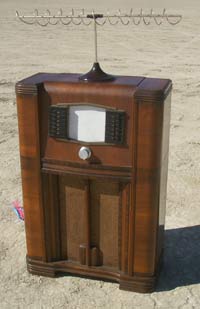 |
 |
Radio Free Quasar
For Burning Man 2004, my project was an antique radio which
receives emissions from nearby quasars (quasi-stellar radio sources).
A computer inside is generating the radio station sounds,
using a phython script which controls a chain of VST plugins for
audio processing.
In addition to being heard, the sounds directly control the
wild gyrations of a laser display, reflected onto the glass
of the radio dial.
Visitors tuned into a near-infinite selection of radio stations,
by turning a large silver knob.
|
What did it sound like?
Rick Ehrhart and I put together a little mini-CD with a few
tracks of audio from Radio Free Quasar. To listen to the
tracks, click on the mp3 files to the right.
|
|
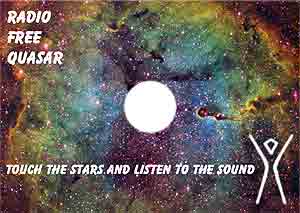
|
|
How was it built?
Step 1 - Obtain antique radio from ebay.
Step 2 - Install audio-controlled laser display. Add a mirror to reflect the
beams onto the radio dial.
Step 3 - Replace the radio dial with a sheet of paper,
so the laser beams are visible.
Step 4 - Install fanless low-power computer, with a dc-dc power supply so that it can be powered from a 12 volt battery.
Step 5 - Add deep-cycle 12volt battery, with a power sequencer to help turn the computer on and off reliably.
Step 6 - Install speakers (USB-powered, i.e. low power)
Step 7 - Install big silver knob (USB interface)
Step 8 - Obtain funky antenna from ebay.
Step 9 - Wrap antenna with el-wire.
Step 10 - Write python software that takes wav files and
processes them randomly with VST plugins.
Step 11 - Add a back cover to the radio so it stands some chance against the elements.
|
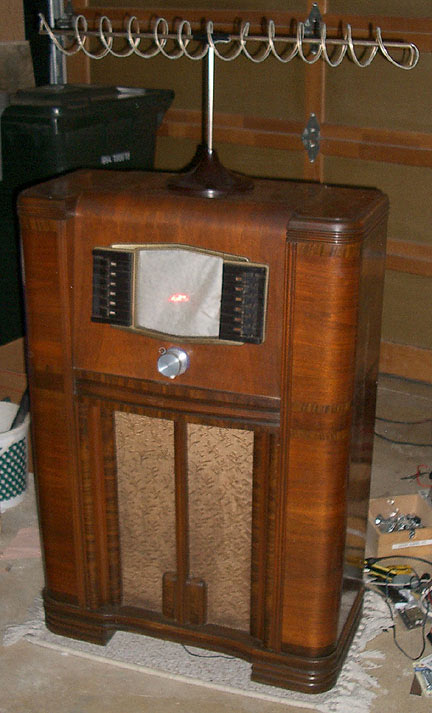 |
 |
This is what it looks like in daylight. |
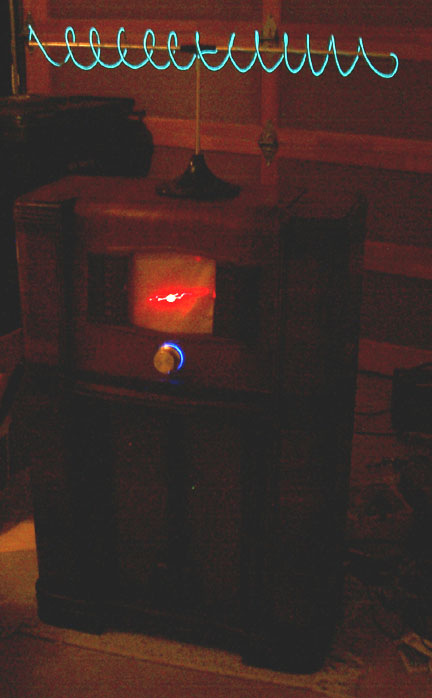 |
 |
It looks like this at night. |
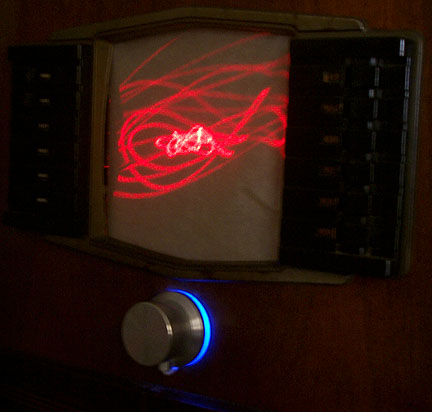 |
 |
A closeup of the radio dial laser display. |
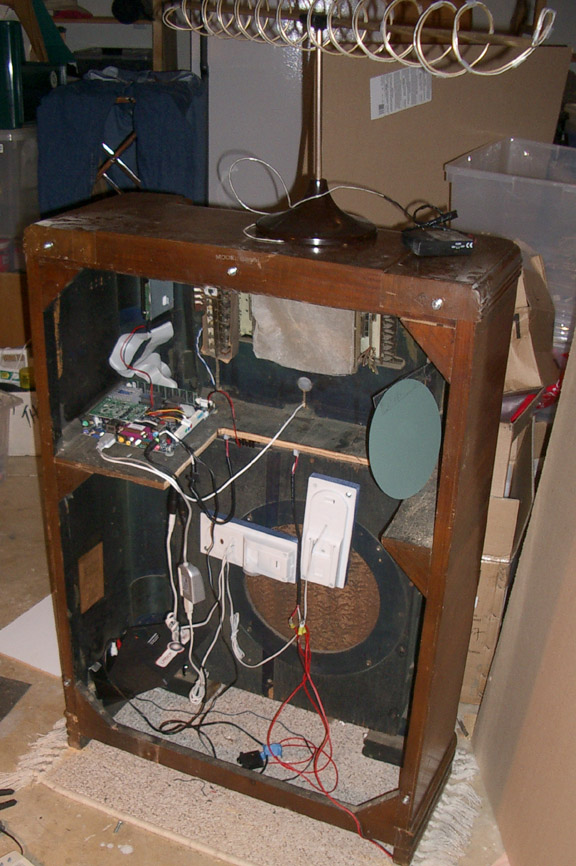 |
 |
A view of the inside, showing the computer and
disk in the upper-left corner, laser in the lower-left corner,
speakers in the middle, and the circular
mirror in the upper-right corner. |
|



